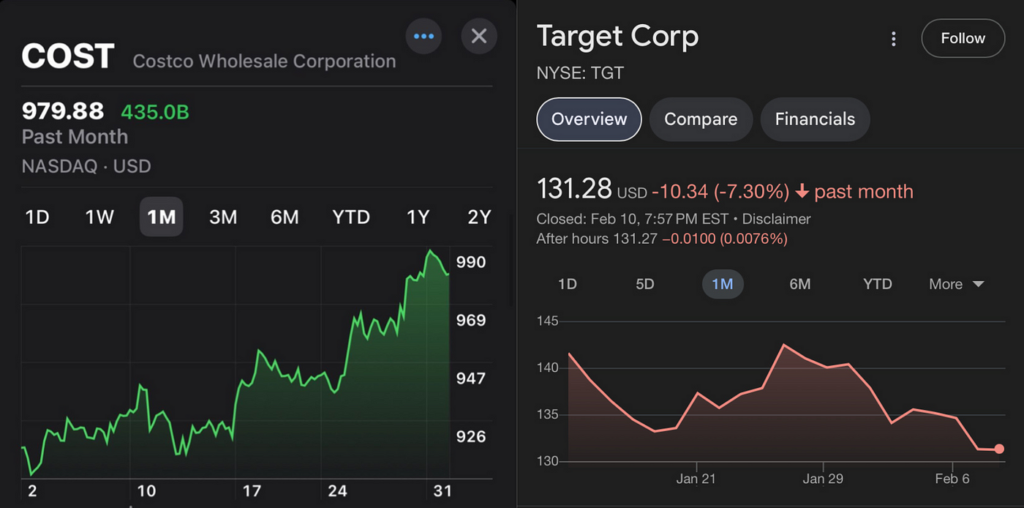Important Information
This website is managed by Ultima Markets’ international entities, and it’s important to emphasise that they are not subject to regulation by the FCA in the UK. Therefore, you must understand that you will not have the FCA’s protection when investing through this website – for example:
- You will not be guaranteed Negative Balance Protection
- You will not be protected by FCA’s leverage restrictions
- You will not have the right to settle disputes via the Financial Ombudsman Service (FOS)
- You will not be protected by Financial Services Compensation Scheme (FSCS)
- Any monies deposited will not be afforded the protection required under the FCA Client Assets Sourcebook. The level of protection for your funds will be determined by the regulations of the relevant local regulator.
Note: Ultima Markets is currently developing a dedicated website for UK clients and expects to onboard UK clients under FCA regulations in 2026.
If you would like to proceed and visit this website, you acknowledge and confirm the following:
- 1.The website is owned by Ultima Markets’ international entities and not by Ultima Markets UK Ltd, which is regulated by the FCA.
- 2.Ultima Markets Limited, or any of the Ultima Markets international entities, are neither based in the UK nor licensed by the FCA.
- 3.You are accessing the website at your own initiative and have not been solicited by Ultima Markets Limited in any way.
- 4.Investing through this website does not grant you the protections provided by the FCA.
- 5.Should you choose to invest through this website or with any of the international Ultima Markets entities, you will be subject to the rules and regulations of the relevant international regulatory authorities, not the FCA.
Ultima Markets wants to make it clear that we are duly licensed and authorised to offer the services and financial derivative products listed on our website. Individuals accessing this website and registering a trading account do so entirely of their own volition and without prior solicitation.
By confirming your decision to proceed with entering the website, you hereby affirm that this decision was solely initiated by you, and no solicitation has been made by any Ultima Markets entity.
I confirm my intention to proceed and enter this websiteWhy Is Target Stock Falling?

Investors are asking one big question: why is Target stock falling in 2025? As one of America’s leading retail giants, Target’s share price has seen a significant downturn this year. The reasons are layered, involving disappointing earnings, economic instability, DEI-related boycotts, supply chain challenges, and intensifying competition. Let’s unpack these developments and what they mean for Target’s stock price outlook.
Weak Earnings Drag Target Stock Down
One of the clearest answers to why Target stock is falling lies in its recent financial results. In Q1 2025, the company reported net sales of $23.8 billion as of the end of the quarter, compared to the previous year, reflecting a year-over-year decline of 2.8%. This weak performance came alongside a 5.7% drop in comparable store sales — a clear signal that consumer demand is slowing.
While digital sales provided some hope with a 4.7% increase, overall revenue fell short of investor expectations. The downgrade in projected adjusted earnings per share to a range of $7–$9 further rattled the market, reinforcing negative sentiment around Target stock. Following the earnings announcement, Target shares declined as investors reacted to the disappointing results and revised outlook.
Current Market Performance

Target stock has been under close scrutiny as investors assess its current market performance amid a challenging retail environment. Worth noting, the Stock Advisor team has consistently provided expert analysis and recommendations, helping investors navigate periods of uncertainty. Their market-crushing outperformance compared to the S&P 500—boasting a total average return of 988%—demonstrates the value of joining Stock Advisor for those seeking to produce monster returns.
In the first quarter of 2025, Target reported a 2.8% decline in net sales, falling to $23.85 billion. This drop reflects the ongoing impact of economic uncertainty and shifting consumer demand, both of which have weighed heavily on the company’s ability to deliver strong results. For investors, the bad news may already be priced into the stock, raising the question of whether this is a potential buying opportunity. While the path to recovery remains uncertain, some analysts believe that Target’s current valuation could offer upside for those willing to weather short-term volatility in pursuit of long-term gains.
Economic Uncertainty Hurts Target Stock
Economic instability has further accelerated Target’s stock decline. Inflationary pressures and wavering consumer confidence are pushing shoppers to become more price-sensitive. Discretionary spending — a key profit area for Target — has taken a hit.
At the same time, import tariffs on goods and supply chain disruptions have raised costs. These factors have led Target to revise its guidance downward, signaling ongoing headwinds. The overall economic backdrop is playing a major role in why Target stock is going down now, especially when compared to more agile competitors.
DEI Boycotts Fuel Target Stock Decline
Another contributor to Target’s stock troubles is the controversy surrounding its diversity, equity, and inclusion (DEI) initiatives. Target’s DEI campaigns have sparked both political backlash and consumer boycotts. Some customers see the campaigns as overly political, while others were disappointed by the company’s partial retreat under pressure.
This brand turmoil has hurt Target’s reputation and foot traffic, contributing to declining sales in certain segments. The DEI controversy is a uniquely modern reason why Target stock keeps falling, reflecting the tension between social responsibility and shareholder value.
Target Stock Falling Due to Supply Chain Issues and Tariffs
The ongoing global supply chain crunch has not spared Target. Roughly 30% of its products are still sourced from China, exposing the retailer to continued tariff risks and elevated import costs. These added expenses have forced Target to adjust its pricing and product strategies, which in turn affects consumer behaviour and overall margins.
To counteract this, Target has begun to diversify its supply sources and use its physical stores as fulfilment hubs — a strategy meant to cut logistics costs. But in the short term, these challenges remain a critical part of why Target stock performance is suffering in 2025.
Target Stock Feels Heat from Competitors
Target is also grappling with increasingly fierce competition. Walmart operates more than 4,700 stores across the U.S., while Target has about 2,000 locations. This size advantage gives Walmart an edge in pricing power, inventory distribution, and customer reach.
Meanwhile, Amazon continues to dominate the e-commerce landscape, and dollar stores are stealing value-focused shoppers. To compete, Target is investing in curated experiences, upgrading its media and marketing strategy, and rolling out 10,000 low-cost items aimed at budget-conscious consumers. Yet, Target’s stock price continues to struggle, reflecting investor skepticism about its competitive edge. However, Target is positioned for long-term growth through its investments in curated experiences and low-cost items, which could help it capitalise on future opportunities despite current challenges.
Analyst Downgrades Weigh on Target Stock
The broader sentiment on Wall Street doesn’t help either. Most analysts have a ‘Hold’ rating on Target stock, citing limited near-term upside. One major analyst downgraded the stock to ‘Sell’, citing projected earnings declines of over 6.3% in the next few years, with further challenges anticipated in the coming years. Additionally, Target’s recent results were a miss compared to analyst expectations.
While the 12-month price target for Target stock sits at $116.70 — a potential 20% upside — investors are approaching with caution. The company’s outlook for the rest of 2025 remains uncertain, with analysts expressing concerns about sales and performance amid ongoing economic headwinds. This uncertainty is another reason why Target stock value is falling, as confidence wanes even among long-term shareholders.
Is Target Stock Undervalued Right Now?
Despite its decline, some investors view Target stock as a value opportunity. The company’s dividend yield is attractive — currently sitting at around 4.6%, with a healthy payout ratio of 49%. Target’s forward P/E ratio is also below the industry average, indicating a possible undervaluation. For investors looking to make money, this may present an attractive entry point.
Analysts estimate Target’s intrinsic value at $161.71. If accurate, the stock could be trading at a discount. For clients or patient investors seeking long-term value, the potential for recovery could pay off. Still, with mounting external and internal pressures, it’s no surprise that many investors remain on the sidelines, waiting for stronger signs of recovery.
Should You Buy Target Stock While It’s Falling?

Investors wondering whether to buy Target stock now should consider both the risks and potential rewards. Now may not be the ideal time to take a position in Target stock, given the current uncertainties. Yes, the valuation and dividends look appealing. But the combination of weak earnings, boycotts, supply chain troubles, and competition are serious challenges.
Recent analysis has revealed that Target’s prospects remain uncertain until there is clear evidence of financial recovery and regained market share. Until Target shows stronger financial recovery and reclaims market share, a wait-and-see strategy may be the most prudent. The stock may offer long-term value, but volatility remains high in the short term.
The opinions expressed here are those of the analysts and may differ from other sources.
Conclusion
In conclusion, Target stock is falling due to a combination of weak earnings, economic headwinds, consumer backlash, supply chain disruptions, and intense competition from retailers like Walmart and Amazon. These factors have eroded investor confidence and weighed heavily on TGT stock performance in 2025.
While the current stock price may present a value opportunity — especially for dividend-focused investors — the road to recovery depends on Target’s ability to regain trust, stabilise margins, and outperform in a highly competitive retail environment.
For traders and investors seeking real-time market updates, technical insights, and risk management strategies, Ultima Markets offers a powerful trading platform and expert analysis to help you stay ahead in volatile market conditions. Whether you’re tracking Target stock, sector-wide retail trends, or broader macroeconomic data, Ultima Markets delivers the tools and intelligence you need to trade with confidence.
Disclaimer: This content is provided for informational purposes only and does not constitute, and should not be construed as, financial, investment, or other professional advice. No statement or opinion contained here in should be considered a recommendation by Ultima Markets or the author regarding any specific investment product, strategy, or transaction. Readers are advised not to rely solely on this material when making investment decisions and should seek independent advice where appropriate.












